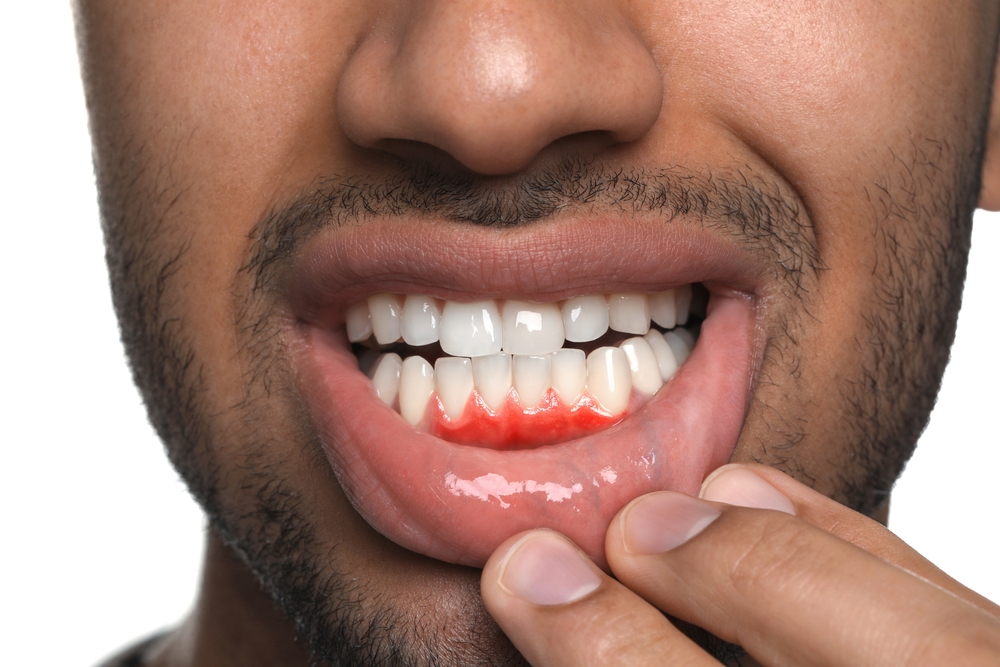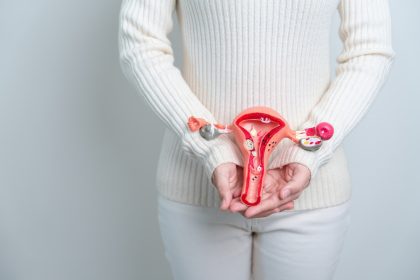That slight tenderness when you brush or the increasingly “long” appearance of your teeth might not seem like a big deal now, but your receding gums are silently setting the stage for serious dental problems down the road. While you’re busy worrying about cavities or stains, the roots of your teeth are becoming dangerously exposed, creating vulnerability that could eventually lead to tooth loss. The good news? Gum graft surgery offers a solution that can reverse this damage before it’s too late.
Nearly half of all American adults are dealing with some level of gum recession right now, many without even realizing it. This common but underappreciated problem isn’t just about aesthetics—it’s a potential dental emergency in slow motion. Let’s dive into the world of gum grafts and discover how this procedure might be the dental intervention you never knew you needed.
Your gums are retreating faster than you realize
Gum recession happens gradually, making it easy to miss until it’s advanced. That millimeter of gum tissue loss each year doesn’t seem significant until suddenly your teeth look unnaturally long and you’re wincing at the slightest temperature change in your food.
This silent retreat happens for various reasons. Aggressive brushing can literally scrub away your gum tissue over time. Grinding your teeth applies forces that push gums backward. Periodontal disease—the most common culprit—involves bacteria that destroy the supporting structures around your teeth, including your precious gum tissue.
What makes recession particularly sneaky is that it often doesn’t hurt until it’s quite advanced. By the time you notice increased sensitivity or teeth that seem to be growing longer, you’ve likely already lost significant gum tissue that won’t return without intervention.
Those exposed tooth roots aren’t just unsightly
When gums recede, they expose the roots of your teeth—parts never meant to see the light of day. Unlike the crowns of your teeth, which are protected by hard enamel, roots are covered with a much softer material called cementum that’s far more vulnerable to damage.
This exposure creates a cascade of problems. Temperature sensitivity makes eating ice cream or sipping hot coffee a painful experience. The softer root surfaces are more susceptible to decay, creating cavities in areas that are harder to repair. Even brushing becomes complicated, as exposed roots are more vulnerable to abrasion from your toothbrush.
Perhaps most concerning, continued recession can eventually expose enough of the root that teeth become loose. Without the structural support of surrounding gum tissue, your teeth lose their anchoring in your jaw, potentially leading to tooth loss despite otherwise good dental health.
How the surgical solution actually works
Gum graft surgery essentially involves taking tissue from one area of your mouth and relocating it to cover the exposed tooth roots. Think of it as patching a worn area with fresh material to restore protection and support.
The procedure typically targets the most severely affected teeth first. After numbing the area with local anesthesia, your periodontist creates a small pocket in the existing gum tissue around your exposed root. Then comes the grafting material—either taken from the roof of your mouth, another area of your gums, or sometimes using donated tissue.
This new tissue is carefully positioned over the exposed root and sutured in place. Over the next few weeks, blood vessels grow into the graft, integrating it with your existing gum tissue. When healing is complete, that previously exposed root is now protected by a fresh, healthy layer of gum tissue that functions just like your original gums.
The three types of grafts for different situations
Not all gum grafts are created equal. Depending on your specific condition, your periodontist might recommend one of three main approaches, each with its own advantages.
Connective tissue grafts—the most common type—involve taking a piece of tissue from under a flap cut in the roof of your mouth, then stitching this tissue over the exposed root. This technique provides excellent coverage and a high success rate, making it the go-to choice for most cases of root exposure.
Free gingival grafts take tissue directly from the surface of the palate rather than from underneath a flap. This approach is often used when a patient needs to strengthen thin gums to prevent future recession, as it provides thicker tissue but may not blend as naturally with surrounding gums.
Pedicle grafts use tissue adjacent to the exposed root, partially cutting it away but leaving one edge attached, then stretching and positioning it to cover the exposed area. This technique has the advantage of not requiring a separate donor site but is only possible when healthy gum tissue exists near the recessed area.
What recovery actually feels like
The immediate aftermath of gum graft surgery involves manageable discomfort rather than severe pain. The donor site—typically the roof of your mouth—usually feels similar to a pizza burn and becomes the primary source of discomfort during healing.
The first 24-48 hours bring the most noticeable symptoms. Expect some swelling, especially if multiple teeth were treated. You might notice minor bleeding that should subside by the second day. Pain is typically well-controlled with over-the-counter medications, though your dentist may prescribe something stronger if needed.
Your diet undergoes a temporary but significant change. For the first two weeks, you’ll need to avoid anything that could disturb the graft—no crunchy, spicy, or extremely hot foods. Soft, cool foods like yogurt, smoothies, pasta, and eggs become your best friends during this healing period.
The eating strategy that protects your investment
Navigating meals after a gum graft requires strategy, not just restriction. The goal is avoiding any pressure or irritation to both the graft site and the donor area until initial healing occurs.
For the first few days, focus on liquid nutrition—smoothies, protein shakes, and broths provide essential nutrients without requiring chewing. As healing progresses, soft foods become acceptable, but always chew on the opposite side from your surgical sites.
Temperature matters significantly during recovery. Very hot foods can increase bleeding and swelling, while extremely cold items might trigger sensitivity. Room temperature or slightly cool options provide the most comfort while your tissues are healing.
This modified diet typically lasts about two weeks, though your periodontist will provide specific guidance based on your healing progress. Following these guidelines closely directly impacts how successfully your graft integrates and how quickly you return to normal function.
How to prevent another round of surgery
Once you’ve invested in gum graft surgery, protecting that investment becomes paramount. Several key strategies can help ensure your newly restored gumline remains stable for years to come.
Brushing technique requires immediate attention, as aggressive scrubbing is often a contributor to recession in the first place. Switch to a soft-bristled brush and use gentle, circular motions rather than vigorous back-and-forth scrubbing. Electric toothbrushes with pressure sensors can help prevent applying excessive force.
Grinding and clenching put tremendous pressure on both teeth and gums. If you’re prone to these habits, a night guard provides essential protection against forces that could push your gums back again. Some patients even benefit from wearing guards during stressful daytime periods when clenching is common.
Regular professional cleanings become even more important after a graft. These appointments allow for early detection of any new recession and removal of bacterial buildup that could threaten your gum health. Most post-graft patients benefit from cleanings every three to four months rather than the standard six-month interval.
The surprising confidence boost beyond dental health
While the physical benefits of gum grafting focus on tooth protection and sensitivity reduction, many patients report significant psychological benefits that they hadn’t anticipated. Restoring a natural gumline often transforms a smile in ways that dramatically impact self-confidence.
Teeth that previously appeared too long or irregular regain natural proportions after grafting. Many patients find themselves smiling more freely after years of self-consciousness about their gummy appearance. This aesthetic improvement, while not the primary medical goal of the procedure, creates meaningful quality-of-life enhancements.
The elimination of pain and sensitivity also allows for more natural social interactions. No more wincing when drinking cold beverages or avoiding certain foods in public settings. These seemingly small changes add up to a more comfortable, confident daily experience that many patients identify as the most satisfying outcome of their procedure.
Financial considerations beyond the price tag
Gum grafting typically costs between $600-$1,200 per tooth, which initially seems significant. However, considering this as preventive care rather than cosmetic dentistry reveals its true value. The cost of replacing a lost tooth with an implant runs three to four times higher than grafting to save the natural tooth.
Many dental insurance plans provide partial coverage for grafting when it’s deemed medically necessary rather than purely cosmetic. Documentation of recession measurements, sensitivity, or beginning bone loss can help secure insurance participation. Even with out-of-pocket expenses, the long-term economics favor intervention before tooth loss occurs.
Payment plans offered through dental offices or third-party medical financing can make treatment more accessible, typically spreading costs over 12-24 months. When weighing these options, consider that untreated recession only worsens over time, potentially increasing both the extent of necessary treatment and its cost.
The decision to pursue gum graft surgery represents an investment in both immediate comfort and long-term dental health. By addressing recession before it leads to tooth loss, you’re potentially saving thousands in future dental work while preserving your natural smile. That exposed tooth root might seem like a minor inconvenience today, but addressing it now could prevent major dental problems tomorrow.












